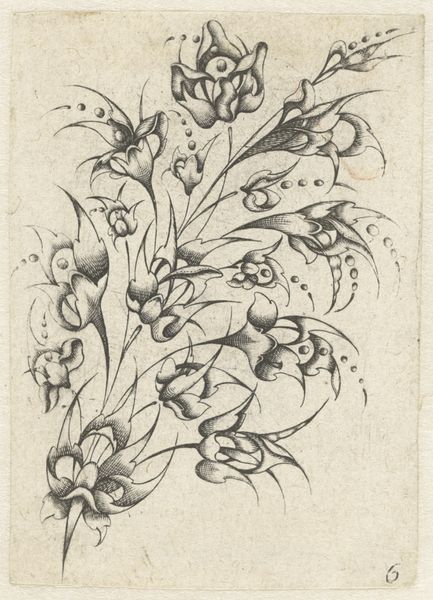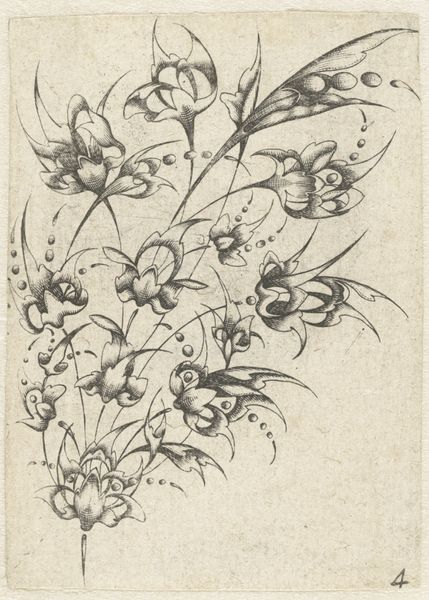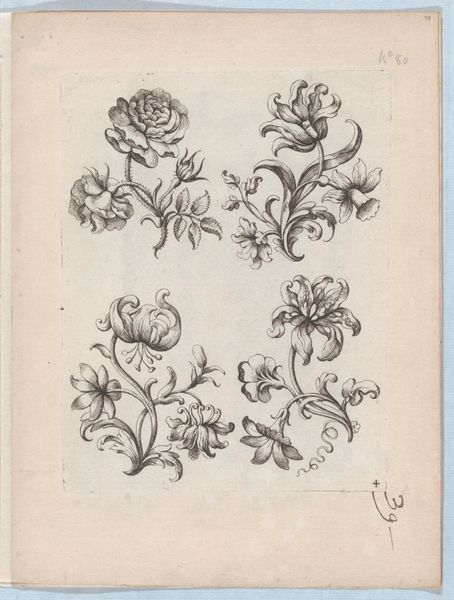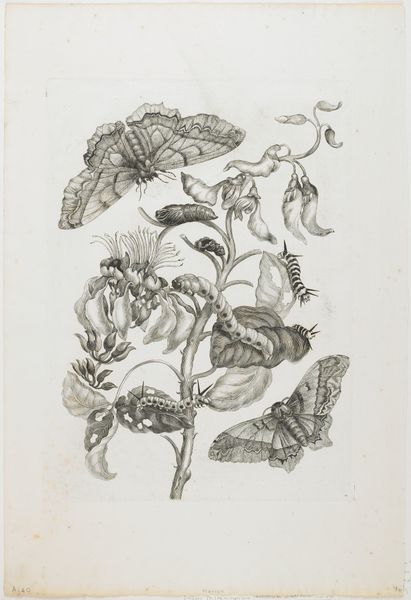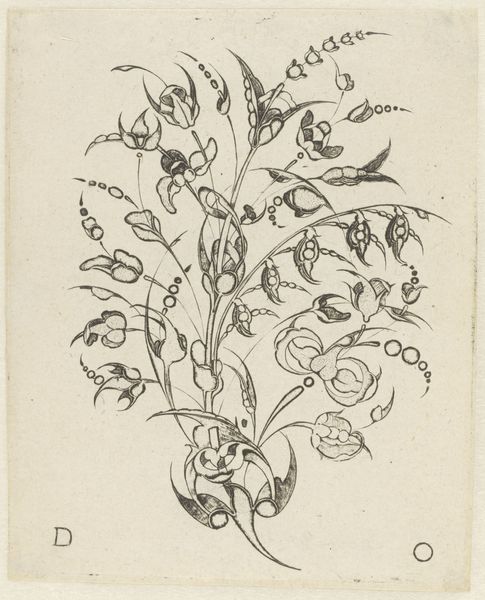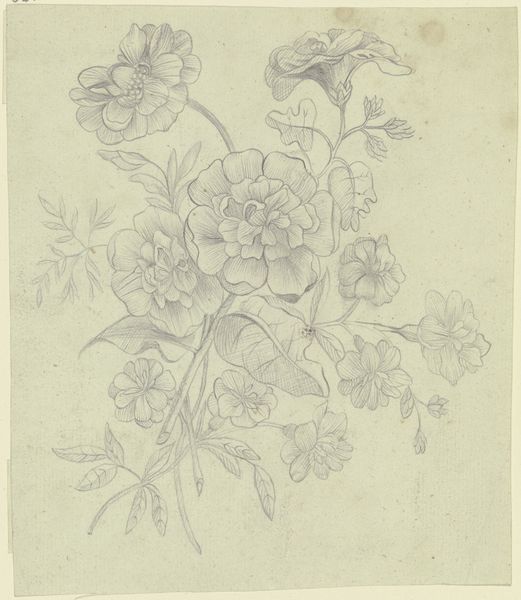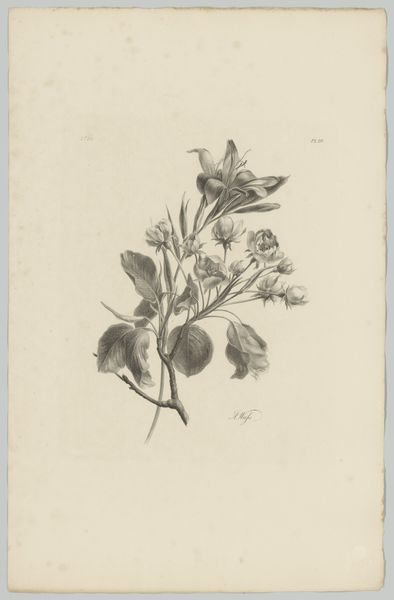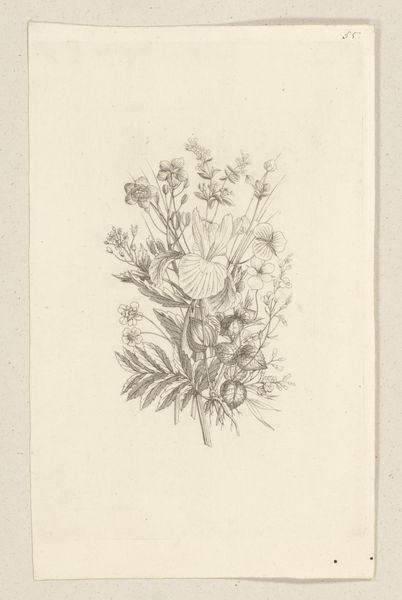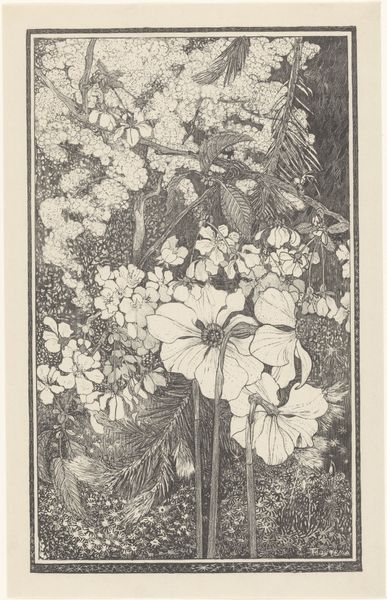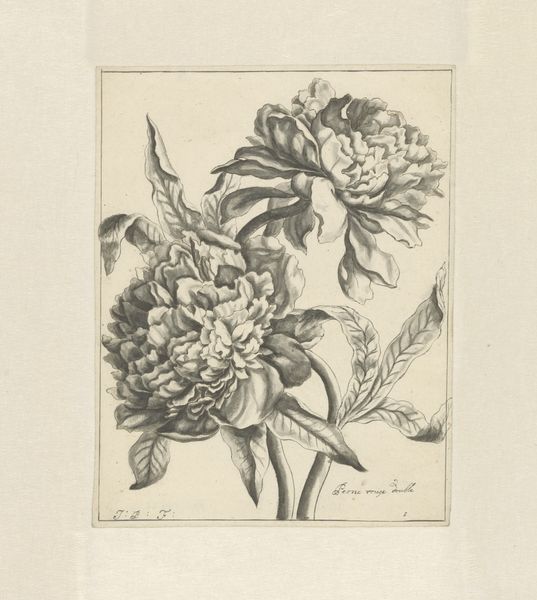
drawing, print, ink, woodcut
#
drawing
#
organic
# print
#
ink
#
linocut print
#
woodcut
#
line
Dimensions: height 613 mm, width 455 mm
Copyright: Rijks Museum: Open Domain
Editor: So, this is ‘Studie papavers’, a drawing from 1920 by Johannes Frederik Engelbert ten Klooster. It seems to be a print, maybe a woodcut or linocut, showing poppy flowers. The stark black and white and the sharp lines give it a kind of graphic, almost harsh feel. What catches your eye in this work? Curator: Well, I immediately see a fascinating interplay of materials and technique. This print, created with either linocut or woodcut, points us to a particular moment in art history when printmaking was gaining recognition not just as a reproductive medium, but as a form of artistic expression in its own right. Consider the labor involved in carving the design. Editor: Carving, right, taking away material... does the choice of material have significance here? Curator: Absolutely! Wood or linoleum each have different properties influencing the final image. Wood, with its grain, allows for certain textures, whereas linoleum, being softer, offers greater ease in carving more detailed, fluid lines. The black ink, readily available and easily reproducible, democratizes art, making it accessible beyond elite circles. This speaks to a potentially socialist agenda to bypass the art market by reaching mass production via industrial reproduction. Editor: So it’s not just about the poppies, but about the means of getting the image to the masses. It makes me wonder if the artist himself printed the work, or outsourced it, to see how that affects labour practices. Curator: Precisely! Think about the role of the printing press itself – a piece of technology that allowed for wider distribution, impacting not just art, but also literature and political discourse. Considering who owned the means of production and how this piece participated in a larger social discourse could provide meaningful insights into the relationship between art, labor, and capital in the early 20th century. Editor: I hadn't thought about the layers of labor embedded within what I just saw as a simple floral print. It's a fascinating way to look at it. Curator: Seeing the social context of the physical object is an entry point to deepen your understanding and shift how one interprets artworks from a purely aesthetic evaluation.
Comments
No comments
Be the first to comment and join the conversation on the ultimate creative platform.
